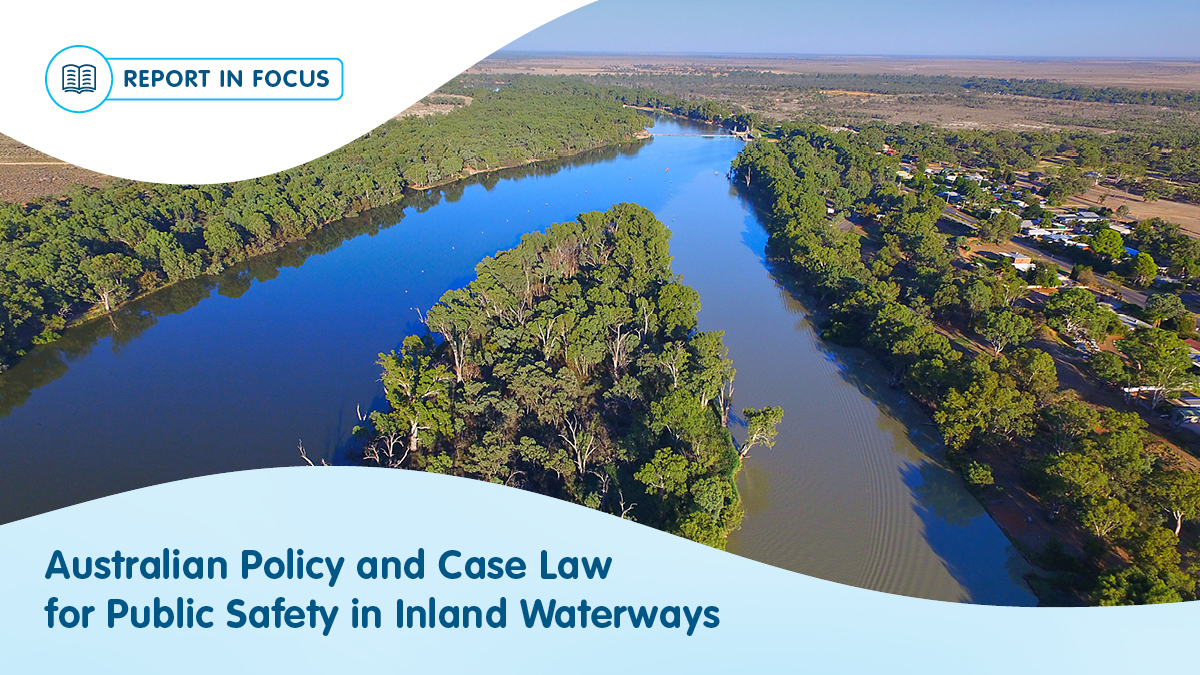
A new report commissioned by the Royal Life Saving Society – Australia has found that consistent public safety standards including industry guidelines are needed to support a reduction in drownings inland waterways.
The report, Australian Policy and Case Law for Public Safety in Inland Waterways: A Review and Recommendations 2022 reviewed the policy and governance frameworks relating to inland waterways, ocean beaches and aquatic facilities and all Australian coronial and legal liability cases involving inland waterway safety.
In the 10 years to June 2021, 940 Australians lost their lives to drowning in inland waterways, with 70 per cent of those deaths occurring in regional and remote locations. Almost three-quarters of those who drowned were not visitors to the area. More than half the drowning deaths occurred in rivers with the remainder occurring in creeks, lakes, and dams.
The report's authors undertook a desktop review of legislation, policy, standards, and legal cases, including relevant Supreme Court and High Court of Australia judgments, coronial recommendations, and examined the Royal Life Saving National Fatal Drowning Database.
The analysis found that in the absence of objective standards, courts tended to make detailed recommendations for specific locations which at times were inconsistent. Nationally consistent standards would enhance safety.
The report proposes a set of principles to guide improvements to public safety in inland waterways:
- Develop industry safety guidelines for waterway owners/operators
- Provide and promote safe swimming locations such as aquatic facilities and supervised beaches
- Encourage the development of local water safety plans/strategies
- Introduce zoning to waterways, to ensure swimmers and watercraft are safely separated
- Designate safe swimming locations
- Prohibit alcohol and drugs in high-risk locations, and enforce the prohibitions
- Encourage collaboration between stakeholders
- Develop and implement local water safety campaigns and communication messages
- Ensure Australian Standard approaches to water safety signage are adopted in inland waterways the same as they are on ocean beaches and public swimming poos
- Encourage supervision, particularly of children, around all aquatic environments
It is proposed that a policy framework should be developed which assists with making inland waterway public safety recommendations for owners/operators clearer and more consistent.
The report notes that these principles may not be appropriate for all inland waterways but developing a voluntary industry framework could contribute towards reducing the unacceptably high drowning rates.
While Royal Life Saving has researched inland waterway safety previously, these findings increase our understanding of some issues faced by coroners in determining what measures are reasonable and practicable to introduce in open water environments such as rivers. It highlights where policies and frameworks are needed to promote safety for all communities, especially inland communities adjacent to rivers.
Royal Life Saving is committed to working with communities, governments and waterway owners and operators to ensure any future frameworks are industry-practical and encourage improvements to water safety.
